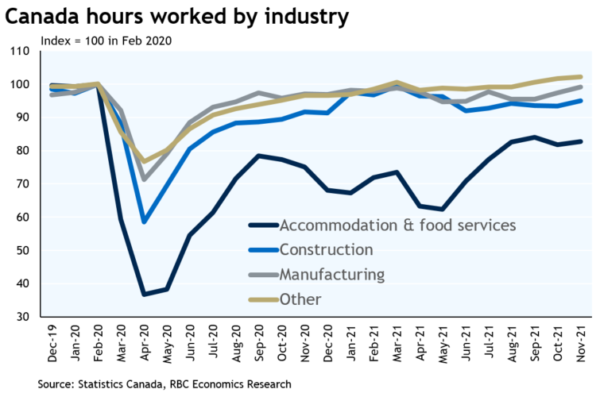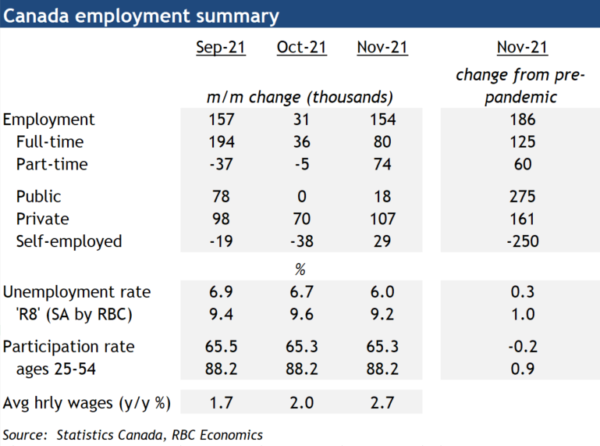- Employment jumped much stronger-than-expected 154k in November
- Unemployment rate fell to 6.0% – close to pre-pandemic levels
- Labour shortages to grow more acute, absent significant disruptions from the Omicron variant
The Canadian labour market recovery took a larger-than-expected step forward in November with a 154k jump in employment, bringing the total to 186k above pre-shock February 2020 levels. The unemployment rate plunged 0.7 ppts to 6.0% – still above pre-pandemic lows but much closer to the kind of rate historically consistent with a healthy labour market. Hours worked jumped another 0.7% to get back to pre-pandemic levels.
The November employment surge was despite still exceptionally low level of workers in the high contact service sectors. Employment in accommodation & food services edged up 5k from October but is still more than 200k below pre-shock levels. Travel and hospitality spending has been rebounding, but with the unemployment rate now substantially lower, it is increasingly clear that there are not enough remaining unemployed workers out there to re-fill all of those jobs any time soon.
The Omicron variant is a reminder that the pandemic is not over. And global supply chain disruptions and rising input costs remain acute challenges for businesses. But even as/if those challenges fade in the year ahead, labour shortages are only expected to intensify. Lack of labour supply means increased hiring demand is expected to show up more in above-trend wage than employment gains going forward. To-date, wage growth has been relatively modest. Hourly earnings were up 2.7% year-over-year in November, and Statistics Canada reported a 2-year increase of 5.2% adjusting for shifting employment composition – but gains were stronger among new hires and in some industries, including accommodation & food services (+8.5% versus 2 years ago) suggesting that wage growth is beginning to creep higher.















